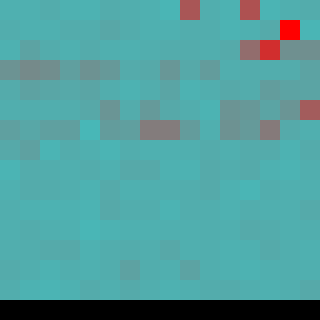Hi all,
The human mind is one of the greatest achievements in the natural world, it's power and utility are still not entirely known, it's limits unfathomable.
There are true geniuses, ones who can consciously direct their thoughts and imagine the universe of the very small and the very large, ones who can describe the beauty of nature in pure mathematics. There are those of us who are terrible at maths, but subconsciously your mind can estimate the speed of objects, the distance required to travel, the angle of the road, any physical limitations of movement to cross a road or catch a ball. It can also prioritise very well. Do we need to concentrate on the Lion in the bushes, or the stone in our shoe? It is a fantastic machine.
But it is not without its limitations. Yes, sometimes the mathematics ability is hidden from us. We can instinctively cross the road or catch a ball, but times tables are still a mystery. It's affected by mood, emotions, tiredness and more importantly, and what I am to focus on, distraction and procrastination.
First though, a quick leap to computing. Computers are one of the greatest inventions of the human race. The power and speed of processors has increased at a near exponential rate. The speed of storage has increased by a phenomenal amount too, since the invention of punch tape or physical switches. In the early days, we were limited to doing things one after the other, but then RAM and multi-core and multi-threaded processors came along. We could do more at once. No longer limited to sequential processing or access, things could be done at the same time and delivered faster.
And here is the rub.
In the IT sphere we have been, for decades now, trying to speed up computers. They are blisteringly fast. Any question you want answered can be retrieved very quickly. Any communication will arrive instantly and pop up on our screen. Email, Instant Messaging, Facebook, that report we wanted, that spreadsheet thats taking a while. All popping up as soon as they are ready. Each fighting for our attention. Each requiring our poor brains to switch focus again and again and again.
This is wrong.
We created computers so we could tell them what to do for us. Now they are driving. All these pop ups and alerts, each one a major distraction, each one has to be prioritised and thought about by our minds before we decide if we need to click on that report that's just come in. Do you need to open that report, or reply to Kevin who has just IM'd you? Do you need to reply to that facebook comment? Do you need to answer that email right now? Even if you don't need to talk to Kevin you still need to open the chat window to prioritise it against other things that have 'just popped up'.
My suggestion is that for our normal devices, our desktops and laptops and pads and phones and All in One's and smart watches (an ad nauseum list in the 21st century), we stop trying to make them faster. We need to make them "smarter". More like us. More for us. More like the way we think.
In order for this to happen we need to become more like the computers from yesteryear. More serial, more focussed. Like we used to be, when we used to make, build and hunt. We need to rest our conscious mind by providing things in a serial manner one job at a time. This will stop distractions. Less stress from swapping thought will also enable our subconcious mind to solve other issues, instead of trying to remember what that last email said. We don't need our computers to be fast, we need them to deliver the answer when we are ready.
At this point, we don't need our technology to be faster, but we do need to become more symbiotic with our technology. Our technology needs to be more sympathetic to our needs, our energy and our minds. Our computers should know when we are ready for another distraction; another report, another message, another picture of a cat even. Instead of the constant bonging, binging, pinging, popups and other distractions that cause our attention to be dragged away from our focus.
Thanks for reading







